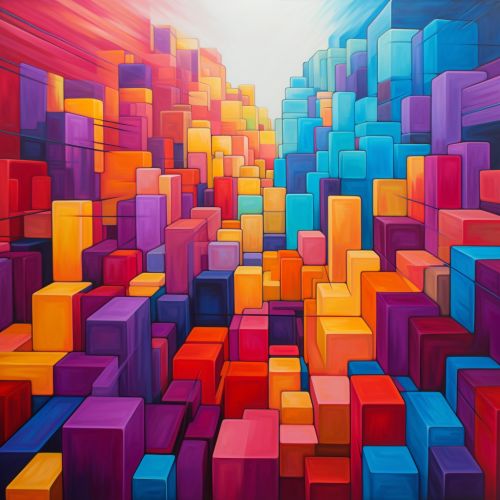Color Field Painting
Origins and Influences
Color Field painting, a style of abstract painting that emerged in New York City during the 1940s and 1950s, is characterized by large fields of flat, solid color spread across or stained into the canvas creating areas of unbroken surface and a flat picture plane. The movement places less emphasis on gesture, brushstrokes, and action in favor of an overall consistency of form and process. The genre was a part of the larger movement known as Abstract Expressionism, although it was distinct in its elimination of expressive or gestural brushwork.


The roots of Color Field painting can be traced back to the work of pioneering abstract artists like Piet Mondrian, Barnett Newman, and Mark Rothko. These artists were interested in exploring the fundamental nature of painting, and their work laid the groundwork for the large-scale, color-dominant paintings of the Color Field movement.
Key Characteristics
Color Field painting is primarily defined by large fields of a single, flat color spread across or stained into the canvas, creating a unified and unbroken surface that suggests a flat picture plane. The color is the subject itself, and the field of color is intended to be seen as an 'object' rather than a window onto or a representation of something else.
The use of color in this style is not just a means to an end but a way of engaging the viewer on an emotional level. The colors used are often bold and vibrant, and the large scale of the paintings is intended to be immersive, enveloping the viewer in a sea of color.
Notable Artists and Works
Several artists are closely associated with the Color Field movement, including Helen Frankenthaler, Morris Louis, and Kenneth Noland.
Frankenthaler, a student of Clement Greenberg, is often credited with pioneering the staining technique, where thin paint is soaked into unprimed canvas. Her painting 'Mountains and Sea' (1952) is considered a seminal work in the Color Field canon.
Louis and Noland, both influenced by Frankenthaler’s work, are known for their method of folding or draping unstretched canvas to create stripes of color. Louis's 'Unfurled' series and Noland's 'Target' paintings are notable examples of this technique.
Legacy and Influence
The legacy of Color Field painting can be seen in the work of many contemporary artists who continue to explore the possibilities of color and form. The movement has also had a significant impact on other art forms, including sculpture, installation art, and digital art.
While Color Field painting was initially met with critical resistance, it has since been recognized as a significant and influential movement in the history of modern art. Its emphasis on the emotional and sensory possibilities of color has broadened the scope of abstract painting and continues to influence artists today.
